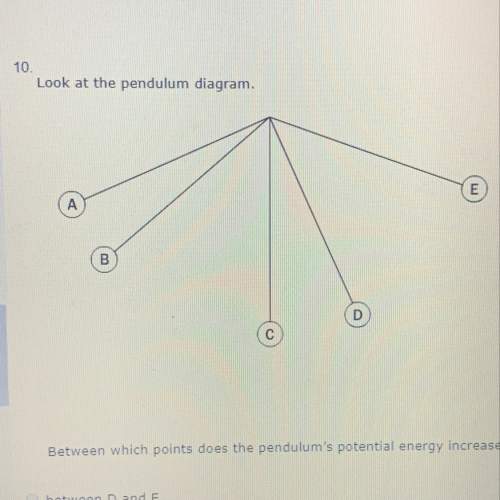
Physics, 22.09.2020 16:01 tfracciscoramon
1. Cassidy Reese is showing off her skydiving skills and testing the difference between shallow and deep braking configurations of her parachute. After a period of free fall, she deploys her chute and sets her parachute to shallow braking conditions where she has a velocity of vs = 12.0i hat − 4.5j m/s. After a period of time, Δts, she changes the setting to deep braking conditions, vd = 6.0i hat − 1.5j m/s, for the remainder of her dive. The simulation displays her trajectory for various Δts displaying the displacement in the x- and y-directions for both parts of her journey. Here, xs and ys are the x- and y-components of her displacement while the parachute is configured in the shallow braking conditions, and xdand yd are the components of her displacement while in the deep braking configuration.2. Cassidy decides to use her vast knowledge of physics to calculate what Δts to use if she wants to travel half the height (y-direction distance) in shallow braking and half the height in deep braking conditions. She uses the information about the velocities in the y-direction and the total y-displacement of 2400 m to calculate what Δts to use in order for the y-displacement to be the same in each part of her motion.1. Y velocity for shallow breaking 4.5m/s2. Y velocity in deep breaking 1.5m/sA. Total X-displacement from part 1 = 7800mB. Total displacement from part 1: 3840C. Total time part 1: 1000s (300s shallow) (700s deep)

Answers: 3


Another question on Physics

Physics, 22.06.2019 02:30
Acar moves at 12m/s and coasts up a hill with a uniform acceleration of -1.6m/s2. how far has it traveled after 6.0s?
Answers: 1

Physics, 22.06.2019 06:30
At very high pressures, gases become and will eventually a) more dense; become hotter b) more dense; change to a liquid or solid c) less dense; combust d) less dense; turn into a liquid
Answers: 2

Physics, 22.06.2019 12:30
Consider a 1000 w iron whose base plate is made of 0.5 cm thick aluminum alloy 2024-t6 (ρ = 2770 kg/m3 and cp = 875 j/kg°c). the base plate has a surface area of 0.03 m2. initially, the iron is in thermal equilibrium with the ambient air at 22°c. assuming 90% of the heat generated in the resistance wires is transferred to the plate, determine the minimum time needed for the plate temperature to reach 200°c.
Answers: 1

Physics, 22.06.2019 16:50
Calculate the first and second velocities of the car with four washers attached to the pulley, using the formulas v1 = 0.25 m / t1 , and v2 = 0.25 m / (t2 – t1) where t1 and t2 are the average times the car took to reach the 0.25 and the 0.50 meter marks. record these velocities, to two decimal places, in table e.
Answers: 2
You know the right answer?
1. Cassidy Reese is showing off her skydiving skills and testing the difference between shallow and...
Questions


English, 22.05.2020 06:06


Mathematics, 22.05.2020 06:06

Mathematics, 22.05.2020 06:06



History, 22.05.2020 06:06







Mathematics, 22.05.2020 06:06





English, 22.05.2020 06:06




